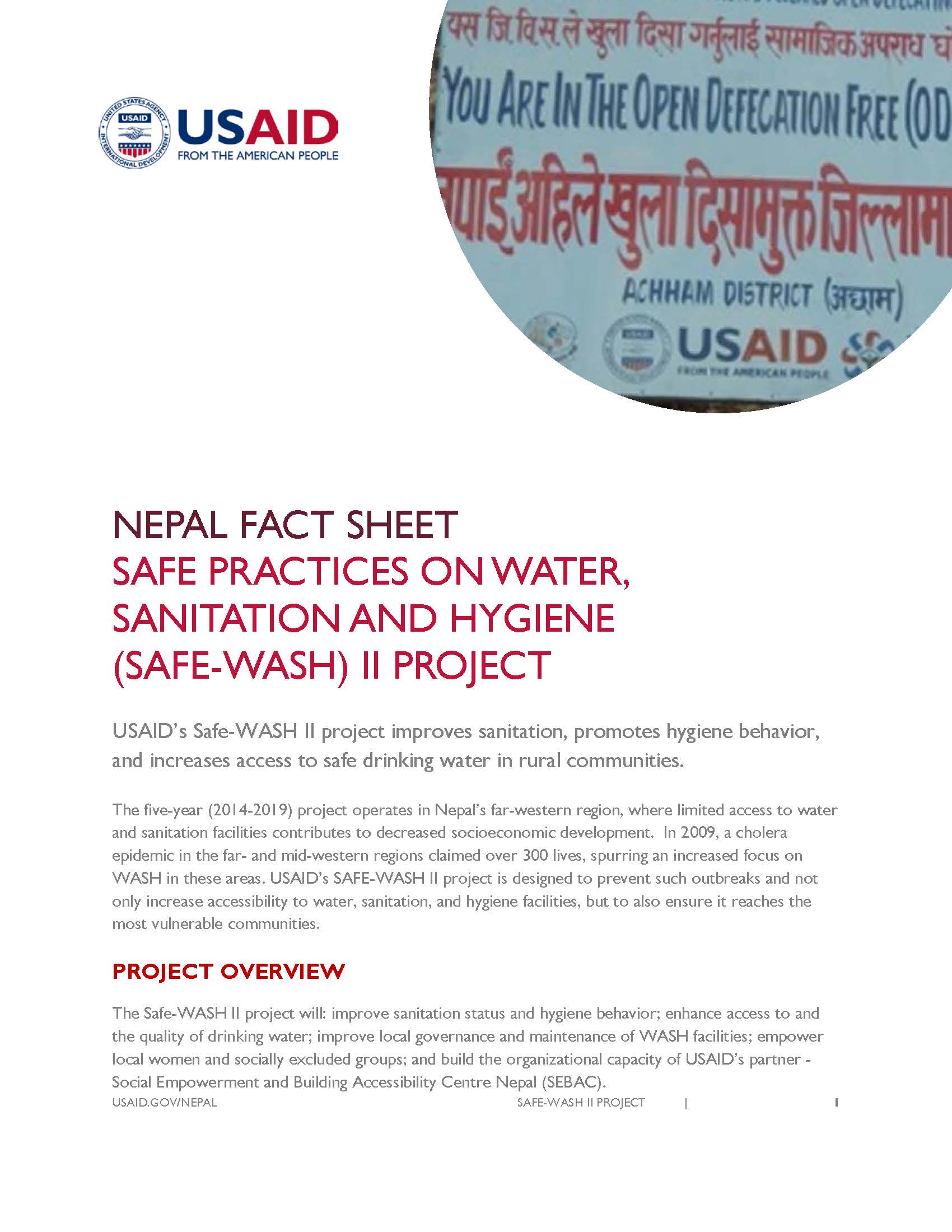Speeches Shim
USAID’s Safe-WASH II project improves sanitation, promotes hygiene behavior, and increases access to safe drinking water in rural communities.
The five-year (2014-2019) project operates in Nepal’s far-western region, where limited access to water and sanitation facilities contributes to decreased socioeconomic development. In 2009, a cholera epidemic in the far- and mid-western regions claimed over 300 lives, spurring an increased focus on WASH in these areas. USAID’s SAFE-WASH II project is designed to prevent such outbreaks and not only increase accessibility to water, sanitation, and hygiene facilities, but to also ensure it reaches the most vulnerable communities.
PROJECT OVERVIEW
The Safe-WASH II project will: improve sanitation status and hygiene behavior; enhance access to and the quality of drinking water; improve local governance and maintenance of WASH facilities; empower local women and socially excluded groups; and build the organizational capacity of USAID’s partner - Social Empowerment and Building Accessibility Centre Nepal (SEBAC).
It will also empower women to support the reduction of repressive menstruation practices (known as chaupadi). Chaupadi reduction and other hygiene improvement activities will be conducted in coordination with the far west region’s Department of Water Supply and Sewerage, and the Regional Health Office, contributing to improved health in rural communities throughout the far west.
Safe-WASH II is implemented in line with the Government of Nepal’s 2011 National Sanitation and Hygiene Master Plan, which aims to achieve zero open defecation across Nepal by 2017. The project works with village WASH coordinating committees and communities to establish latrines, improve open defecation-free status, improve water supply schemes, and enhance the ability of local government to supervise and support community-level activities. To promote gender equality, the project ensures that at least 50 percent of the community’s water user committee membership will be female, with a minimum of two women in key positions.
PROJECT OBJECTIVES
The Safe-WASH II project seeks to achieve four major results:
- Enhanced family health through WASH improvements
- Improved hygiene behavior of the community including reduction of repressive menstruation practices (chaupadi)
- Enhanced governance of the WASH sector
- Enhanced organizational capacity of SEBAC Nepal
PLANNED RESULTS
At the end of the five-year project period, it is anticipated that the following major outcomes will be achieved:
- 100 percent activated district and village water sanitation and hygiene coordinating committees in three districts (Kailali, Kanchanpur, and Darchula) will have prepared and operationalized WASH strategic plans.
- 60 public latrines will be constructed.
- 80,438 Households (8,002 in Darchula, 24,613 in Kanchanpur and 47,823 in Kailali) will have access to an improved sanitation facility.
- Three districts (Kailali, Kanchanpur, and Darchula) will be certified as open defecation-free.
- At least 40 drinking water supply schemes, one demonstration rain water harvesting system, and 150 hand pumps will be constructed.


Comment
Make a general inquiry or suggest an improvement.